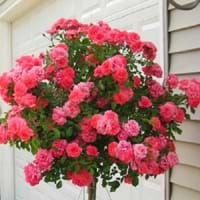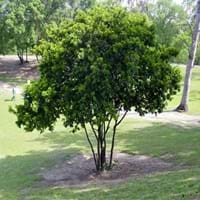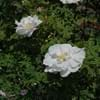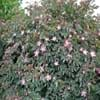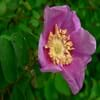Life Span
Perennial
Perennial
Origin
Hybrid origin
Mexico, Caribbean, Central America
Types
Not Available
Not Available
Habitat
All sorts of environments
Clay soil areas, Forests, open Woodlands, Sandy areas, Well Drained
USDA Hardiness Zone
5-9
10-15
Sunset Zone
H1, H2, 6, 7, 8, 9, 12, 13, 14, 15, 16, 17, 18, 19, 20, 21, 22, 23, 24
H2, 24
Habit
Upright/Erect
Oval or Rounded
Flower Color
Red, Ivory
Yellow, Lemon yellow
Flower Color Modifier
Not Available
Bicolor
Fruit Color
Non Fruiting Plant
Dark Salmon, Sienna
Leaf Color in Spring
Dark Green
Dark Green
Leaf Color in Summer
Dark Green
Dark Green
Leaf Color in Fall
Dark Green, Yellow green, Orange Red
Dark Green
Leaf Color in Winter
Light Green
Dark Green
Leaf Shape
Pinnate
Pinnate
Plant Season
Spring, Summer, Fall
Fall, Winter
Sunlight
Full Sun, Partial Sun
Full Sun, Partial Sun
Growth Rate
Medium
Medium
Type of Soil
Loam, Sand
Loam, Sand
The pH of Soil
Acidic, Neutral
Neutral, Alkaline
Soil Drainage
Well drained
Well drained
Bloom Time
Spring, Late Spring, Early Summer, Summer, Late Summer, Early Fall, Fall
Late Fall, Early Winter, Winter, Late Winter
Repeat Bloomer
Not Available
No
Tolerances
Drought
Drought, Salt
Where to Plant?
Container, Ground, Pot
Ground
How to Plant?
Cuttings
Seedlings
Plant Maintenance
Medium
Medium
Watering Requirements
Average Water Needs
Do not let dry out between waterings, Requires consistently moist soil
In Summer
Lots of watering
Lots of watering
In Spring
Moderate
Moderate
In Winter
Average Water
Average Water
Soil pH
Acidic, Neutral
Neutral, Alkaline
Soil Type
Loam, Sand
Loam, Sand
Soil Drainage Capacity
Well drained
Well drained
Sun Exposure
Full Sun, Partial Sun
Full Sun, Partial Sun
Pruning
Remove damaged leaves, Remove dead branches, Remove dead leaves
Prune up lowest branches, Remove branches, Remove damaged leaves, Remove dead branches, Remove dead leaves, Remove dead or diseased plant parts
Fertilizers
All-Purpose Liquid Fertilizer
All-Purpose Liquid Fertilizer
Pests and Diseases
Beetles, Black Spot, Caterpillars, Downy mildew, Mosaic viruses, Powdery mildew, Rust, Scale insects, Thripes
Red blotch
Plant Tolerance
Drought
Drought, Salt
Flower Petal Number
Double
Single
Edible Fruit
Not Available
No
Fragrant Bark/Stem
No
Yes
Foliage Texture
Medium
Fine
Foliage Sheen
Glossy
Glossy
Invasive
Not Available
No
Self-Sowing
Not Available
No
Attracts
Birds, Butterflies
Butterflies
Allergy
Rash
Headache, Nausea, Skin irritation, Swelling
Aesthetic Uses
Showy Purposes
Not Used For Aesthetic Purpose
Beauty Benefits
Not Available
Good for skin
Environmental Uses
Air purification
Air purification, Nesting sites for birds, Shadow Tree, Shelter for wildlife, Wildlife, Windbreak
Medicinal Uses
Not Available
Diarrhea, Digestion problems, Dysentry, Pulmonary hemorrhage, Skin Disorders, Soothing and relieving pain, Stimulates menstruation, Ulcers, Urinary problems, Wounds
Part of Plant Used
Flowers
Bark, Seeds, Wood
Other Uses
Oil is used in perfume, soaps, creams, etc.
Carvings, Used as firewood, Wood is used in construction, Wood log is used in making fences
Used As Indoor Plant
Yes
No
Used As Outdoor Plant
Yes
Yes
Garden Design
Container, Cutflower, Feature Plant, Foundation, Mixed Border, Topiary / Bonsai / Espalier
Feature Plant, Foundation, Mixed Border, Rock Garden / Wall, Screening / Wind Break, Tropical
Botanical Name
Rosa Andeli
CAESALPINIA echinata
Common Name
Double Delight Rose, Hybrid Tea Rose
Brazilwood, Indian Savin Tree, Peachwood
In Hindi
Double Delight Rose
Brazilwood Tree
In German
Double Delight Rose
Brasil Baum
In French
Double Delight Rose
Brazilwood Arbre
In Spanish
Double Delight Rose
Árbol de palo de brasil
In Greek
Double Delight Rose
brazilwood Δέντρο
In Portuguese
Prazer dobro Rosa
Árvore de pau-brasil
In Polish
Double Delight Rose
brazylijskich Drzewo
In Latin
Double Delight Rose
Brazilwood ligno
Phylum
Magnoliophyta
Magnoliophyta
Class
Magnoliopsida
Magnoliopsida
Clade
Not Available
Angiosperms, Eudicots, Rosids
Tribe
Not Available
Caesalpinieae
Subfamily
Not Available
Caesalpinioideae
Number of Species
Not Available
Not Available
Importance of Double Delight Rose and Brazilwood
Want to have the most appropriate plant for your garden? You might want to know the importance of Double Delight Rose and Brazilwood. Basically, these two plants vary in many aspects. Compare Double Delight Rose and Brazilwood as they differ in many characteristics such as their life, care, benefits, facts, etc. Every gardener must at least have the slightest clue about the plants he wants to plant in his garden. Compare their benefits, which differ in many ways like facts and uses. The medicinal use of Double Delight Rose is Not Available whereas of Brazilwood is Diarrhea, Digestion problems, Dysentry, Pulmonary hemorrhage, Skin Disorders, Soothing and relieving pain, Stimulates menstruation, Ulcers, Urinary problems and Wounds. Double Delight Rose has beauty benefits as follows: Not Available while Brazilwood has beauty benefits as follows: Not Available.
Compare Facts of Double Delight Rose vs Brazilwood
How to choose the best garden plant for your garden depending upon its facts? Here garden plant comparison will help you to solve this query. Compare the facts of Double Delight Rose vs Brazilwood and know which one to choose. As garden plants have benefits and other uses, allergy is also a major drawback of plants for some people. Allergic reactions of Double Delight Rose are Rash whereas of Brazilwood have Headache, Nausea, Skin irritation and Swelling respectively. Having a fruit bearing plant in your garden can be a plus point of your garden. Double Delight Rose has no showy fruits and Brazilwood has showy fruits. Also Double Delight Rose is not flowering and Brazilwood is not flowering . You can compare Double Delight Rose and Brazilwood facts and facts of other plants too.
